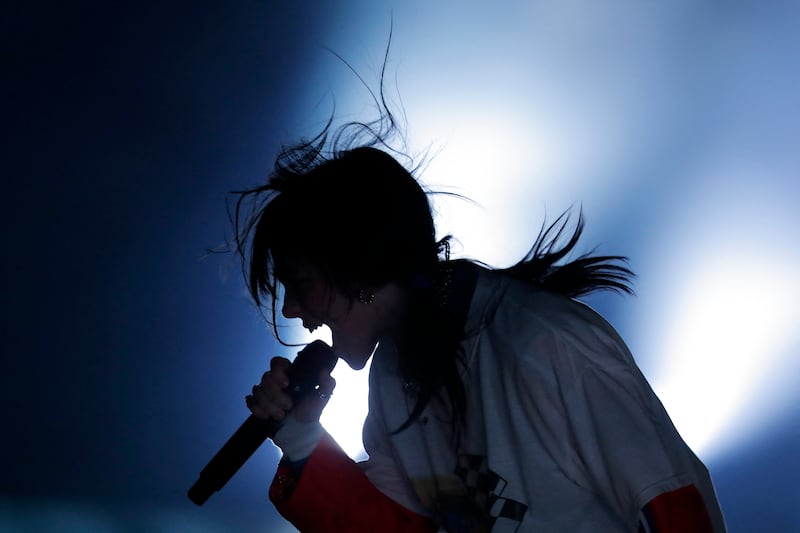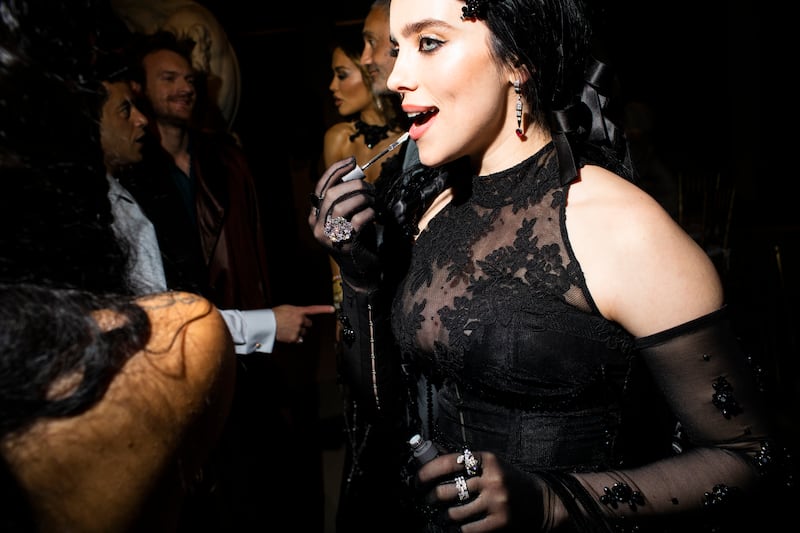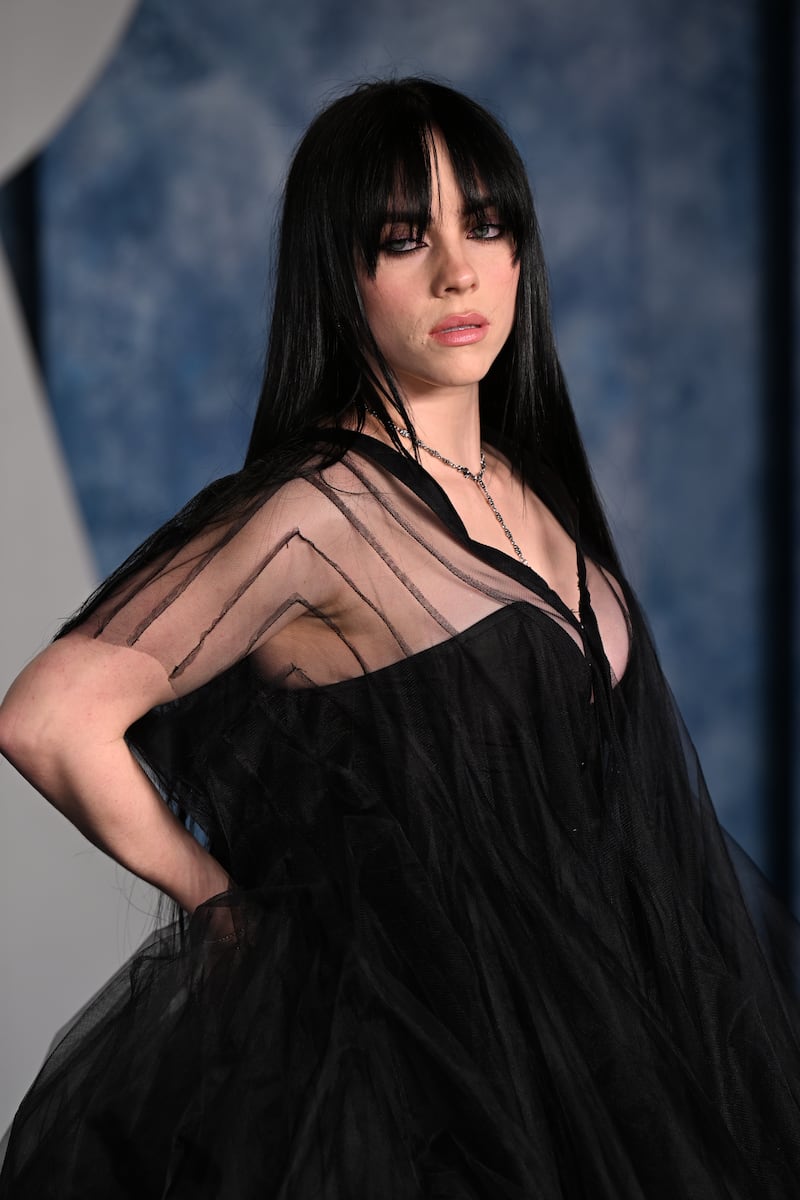Billie Eilish is a record-breaking pop star. She’s the youngest artist to record a Bond theme, the youngest to headline the Coachella Festival in California and the youngest to headline Glastonbury. She also drew the largest ever main-stage crowd at Electric Picnic, performing in 2019 to more than 50,000.
Four years later, Eilish (21) returns to Electric Picnic to again play the main stage, on the Friday night of the festival. The Picnic is still the Picnic – but so much else has changed since 2019. In those days of pre-pandemic innocence, the music industry had not yet looked lockdown obliteration in the eye. Nor were audiences yet in the grip of freaky Fomo: back then, the idea of paying €900 to see Coldplay in Croke Park would have struck even Coldplay as preposterous. On a glorious late August evening in Stradbally, none of the bad things in life – war, disease, TikTok, the Ticketmaster “lobby” – were on anyone’s radar.
But the most significant shift in the intervening period is in pop itself, which has become far more of a blood sport. Harry Styles has racked up his own high score this year as the first pop star since Madonna to headline Slane.
Elsewhere, Olivia Rodrigo has arguably supplanted Eilish as music’s teen queen. Ed Sheeran has had huge success with a more confessional new direction. Coldplay, indie rockers turned day-glo pop purveyors, are set to play Croke Park more often than the Dublin footballers. Taylor Swift is the ruler of all she surveys and could arguably headline the Aviva, which she has sold out for three nights, for a straight week. In terms of raw popularity, in Ireland, Swift is Garth Brooks reborn.
Where does Eilish fit in pop’s new paradigm? In July, the LA-raised artist staged a relatively low-key return with the single What Was I Made For? The wispy ballad was recorded for Greta Gerwig’s all-conquering Barbie yet seems to somehow exist outside the hype attending that film, a nuclear detonation of pink positivity and “Zen Ken” energy from Ryan Gosling.
What Was I Made For? has clocked up 19 million YouTube views in a fortnight, and it’s just a year since Eilish made history as the youngest-ever Glastonbury headliner. So it would be ridiculous to suggest she’s in danger of slipping into irrelevance. Yet a case can be made that 2023 was the year in which pop’s old(ish) guard seized back control.

The past 12 months have, as already pointed out, belonged to Harry Styles, who turned Slane, that vast bowl in the Boyne Valley, into an intimate showcase for his cheeky humour and understated ’70s-splashed repertoire. And to Taylor Swift, whose Eras tour confirms her as the Bruce Springsteen of her generation: an artist who always sounds like herself yet whose songbook contains multitudes.
If the spotlight has, to a degree, turned elsewhere, Eilish will not be devastated. Unlike many of her peers, she has long considered fame a burden rather than a perk. That, after all, was the theme of her second album, 2021′s Happier Than Ever – a record that doubled down on the feverishly baroque style of her 2019 debut, When We All Fall Asleep, Where Do We Go? while delivering the message that mega-celebrity is the mother of all bummers.
You can’t have a normal life and be famous, it just doesn’t work that way
— Billie Eilish
“It’s really hard,” she told the LA Times on the eve of the LP’s release “People that don’t have our lives have no idea how hard it is. It’s f—ing horrible.”
“Billie is so famous that people that aren’t fans of hers at all are taking photos of her while she’s walking through a park so that they can show their friend in a photo that they saw her,” her brother and musical collaborator, Finneas O’Connell, revealed to The Irish Times that same year. “Stuff like that, or paparazzi or articles, just make your life way harder.”
[ Billie Eilish: Watching pornography from the age of 11 destroyed my brainOpens in new window ]
Long before joining the A-list, Eilish was wary of fame. “People do not understand what comes with it,” she said, when I interviewed her in 2018. At that point, she was still a cult artist. But her fanbase, if small, was hardcore. One afternoon she was recognised four times in 20 minutes visiting a mall near her family home in northeast Los Angeles. She was simultaneously flattered and disconcerted: was this a chilling glimpse of her future?
She was increasingly aware, too, of how detached she was from her friends: they were negotiating the average trials of adolescence; she was juggling how much of her private life to share on social media and taking meetings around tours and album release strategies. Month by month, she was ever more distant from her peers.
“You can’t have a normal life and be famous, it just doesn’t work that way,” she told me. “Unless you did something horrible and that’s why you’re famous. But if you really want to be known for something good and people look up to you – you have to work [at your craft]. That [people’s misapprehensions about fame] p****s me off so much.”

She isn’t the only singer in her position to struggle with fame. In her documentary Miss Americana, Taylor Swift flees paparazzi outside her apartment and tells director Liz Garbus she is aware such a level of attention “isn’t normal”.
In the case of Eilish, global celebrity triggered genuine existential angst. This was made clear in her own streaming doc, Apple TV+’s The World’s A Little Blurry, which features a scene where she walks out of a schmoozy meet-and-greet in New York because it’s all too much.
She has also had to run a gauntlet regarding how she presents herself. Early on, Eilish championed baggy, oversized clothing – a sensibility that quickly filtered down to mainstream fashion. But when she switched things up for Happier Than Ever, appearing on the cover of Vogue UK in an Alexander McQueen corset dress, some fans took the shift as a betrayal. A few went so far as to suggest the Vogue shoot was a “deepfake” – AI wizardry cooked up to bamboozle the unwary. It was the Gen Z version of Bob Dylan playing electric guitar.
“Is it just me or is something weird about these?” one wrote on Reddit. “I know they’re just normal pictures but it looks kinda like a deepfake to me. No hate against her or anything. I just wonder if anyone is thinking the same.” They were alarmed, too, that she had stopped swapping her hair colour – it was vivid green at Electric Picnic – and had settled on a naturalistic blonde look.
“Oh, my God! The new Billie!,” Eilish protested to the LA Times. “I wanted something that was more natural, and also, I wasn’t depressed. I felt the need to change it all the time when I was more unstable.”

Beyond merely being an entertainer, Eilish has also been a pioneering figure. She was one of the first pop stars to address the climate emergency in her music when, on her 2019 single All The Good Girls Go To Hell, she sang “Hills burn in California”. Twelve months later, during lockdown, she performed a live-stream show wearing a No Future On A Dead Planet campaign T-shirt.
“The obvious artist is Billie Eilish,” Music Declares Emergency’s Lewis Jamieson told me in 2021 in response to a question about Gen Z and their reaction to the climate crisis. He identified Eilish as a galvanising presence in terms of raising awareness about the challenges facing the environment. “Once this would have been the preserve of Sting or of educated indie bands. Now it is much more widespread and more engaged across music genres.”
In my head, I take everything that comes as if it is normal. I do my thing as if no one is watching or listening
— Billie Eilish
Eilish enjoyed playing Electric Picnic and later returning to Ireland to kick off the European leg of her tour at 3Arena in June 2022. The audience was even more ecstatic than the singer: at 3Arena, as she circulated high above the venue in a cherry picker, there was phone-waving pandemonium on a breathtaking scale. If you were there, the crowd’s screams may still be rattling around your head.
Her Irish connection runs deep. Eilish’s father, actor Patrick O’Connell, is of Irish heritage. She is named after Eilish Holton, from Donadea, Co Kildare – a conjoined twin whose story was told in the 1992 documentary Katie and Eilish: Siamese Twins (Eilish is still alive, but her sister did not survive the separation surgery).
She has certainly inherited a very Irish melancholy. When I spoke to her in 2018, Eilish wanted one thing above all else: to remember how lucky she was to have a successful career. “My one wish is to not take things for granted,” she told me. “If you think about things while you are doing them, that’s insane. It kind of messes you up. In my head, I take everything that comes as if it is normal. I do my thing as if no one is watching or listening.”
A lot more people are watching and listening today, and, given Electric Picnic has raised its capacity, there is every likelihood of Eilish drawing an even bigger main stage crowd this year than in 2019. She is a very different pop star from when she headlined the festival four years ago – savvier, perhaps a little sadder. But if she brings anything like the same dark, tumultuous energy, it will be a performance to remember.
- Billie Eilish plays Electric Picnic on Friday, September 1st








